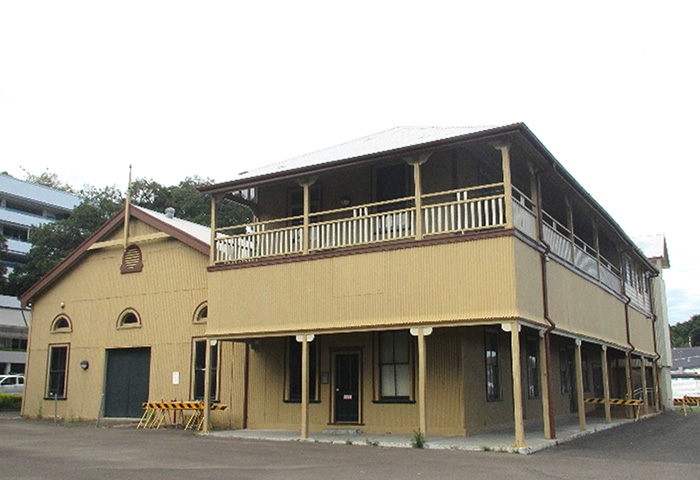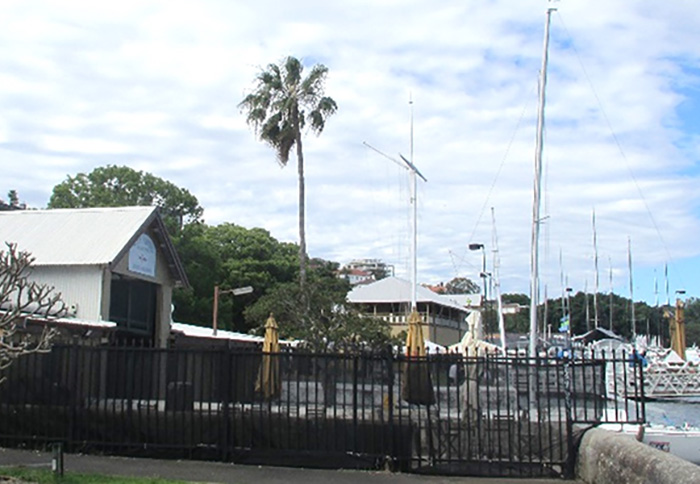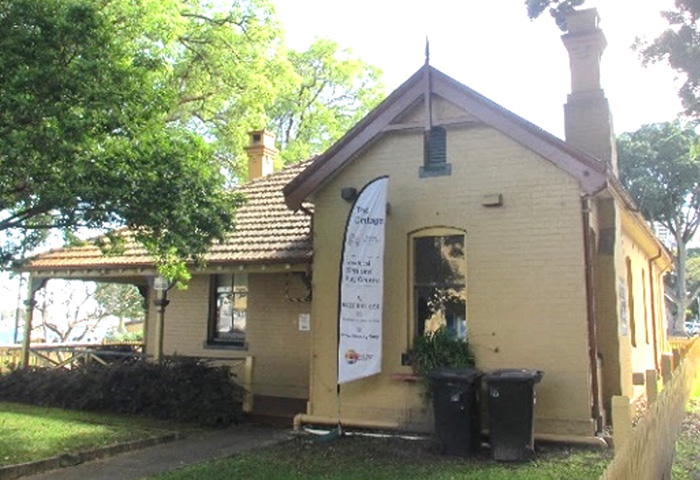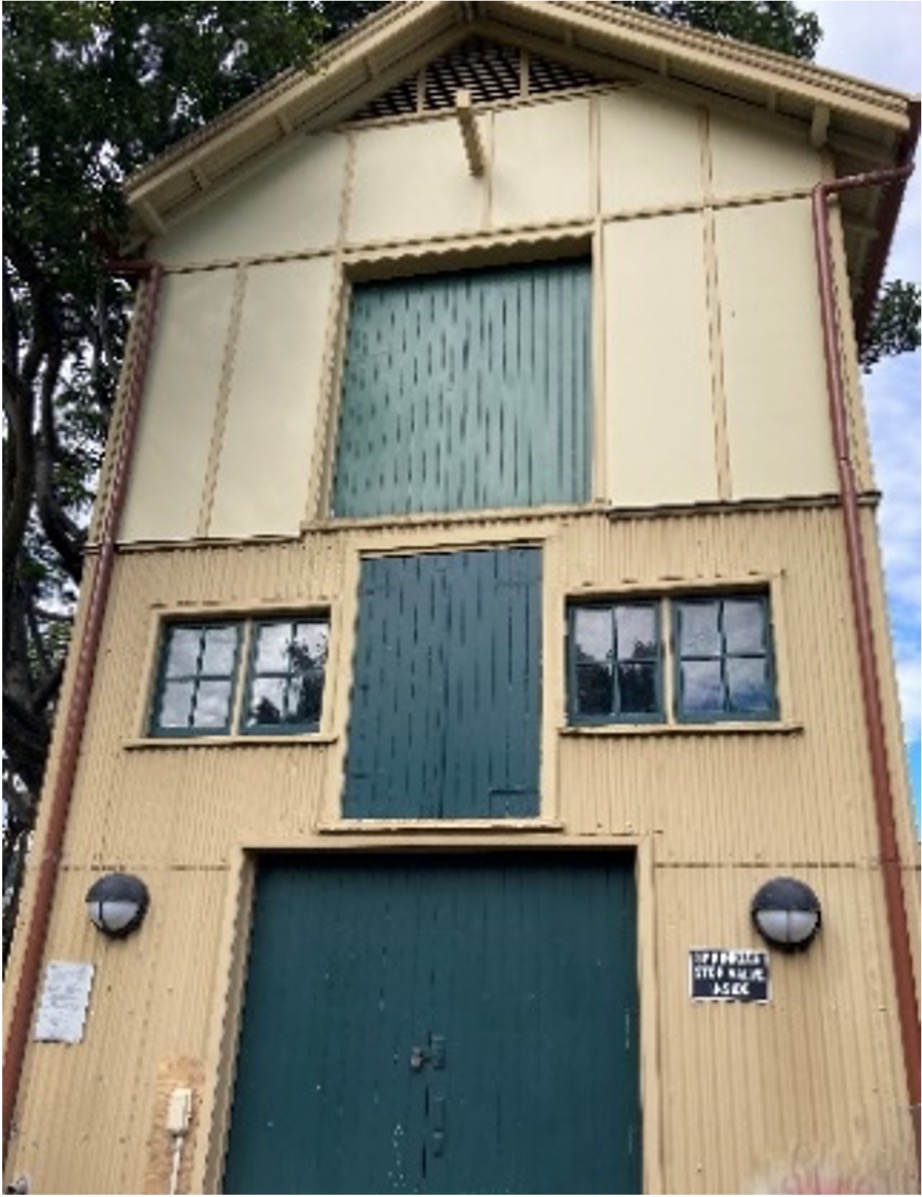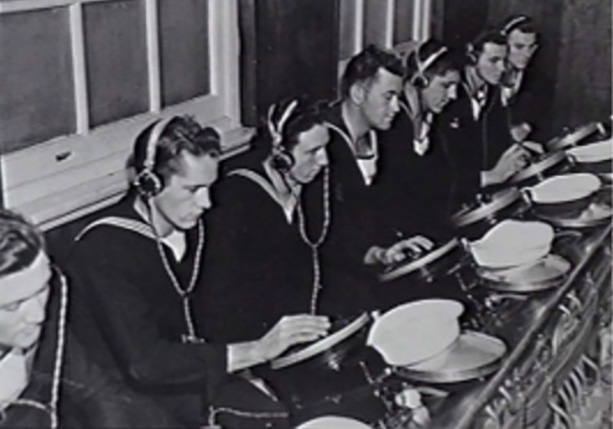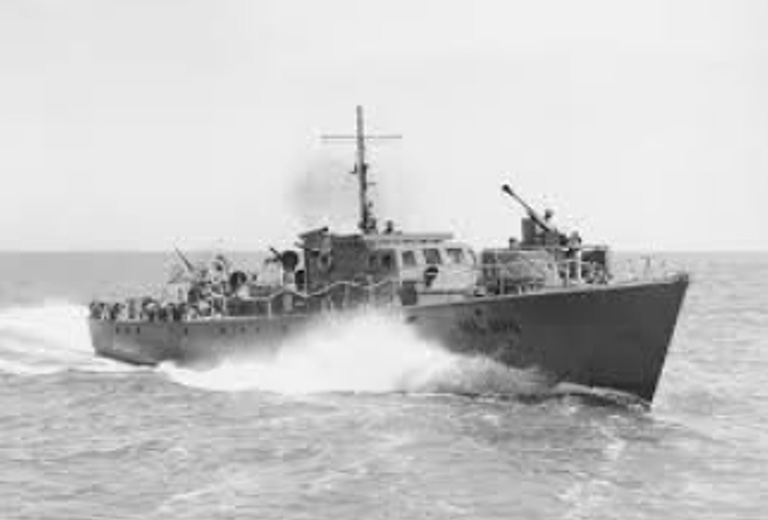Use of the Rushcutters Bay Park by the Navy dates to 1901. The site was chosen for the NSW Naval Brigade (formed under the Volunteer Force Regulation Act of 1867). A requirement was for a waterfront site within marching distance from Victoria Barracks in Paddington, so the location chosen was the nearest Sydney Harbour Bay to the barracks. Nevertheless, the base was not a reality until the Federation of Australia.
Rushcutters Bay Park and Yarranabbe Park are both parks on reclaimed land from the 1880s. This was a major public work requiring reclamation of a large area of marsh, channelling the creek and constructing a ballast dyke sea wall. Reclamation works were completed in 1883.
Sir David Martin Reserve (within Yarranabbe Park) includes the former HMAS Rushcutter, comprising the Sayonara slipway, ramps, sea wall, parade ground, drill hall and extension, sail loft, cottage and garden, Royal Australian Naval Sailing Association (RANSA) boatshed and slipway, flagpole, memorial, plantation reserve, all building interiors and grounds.
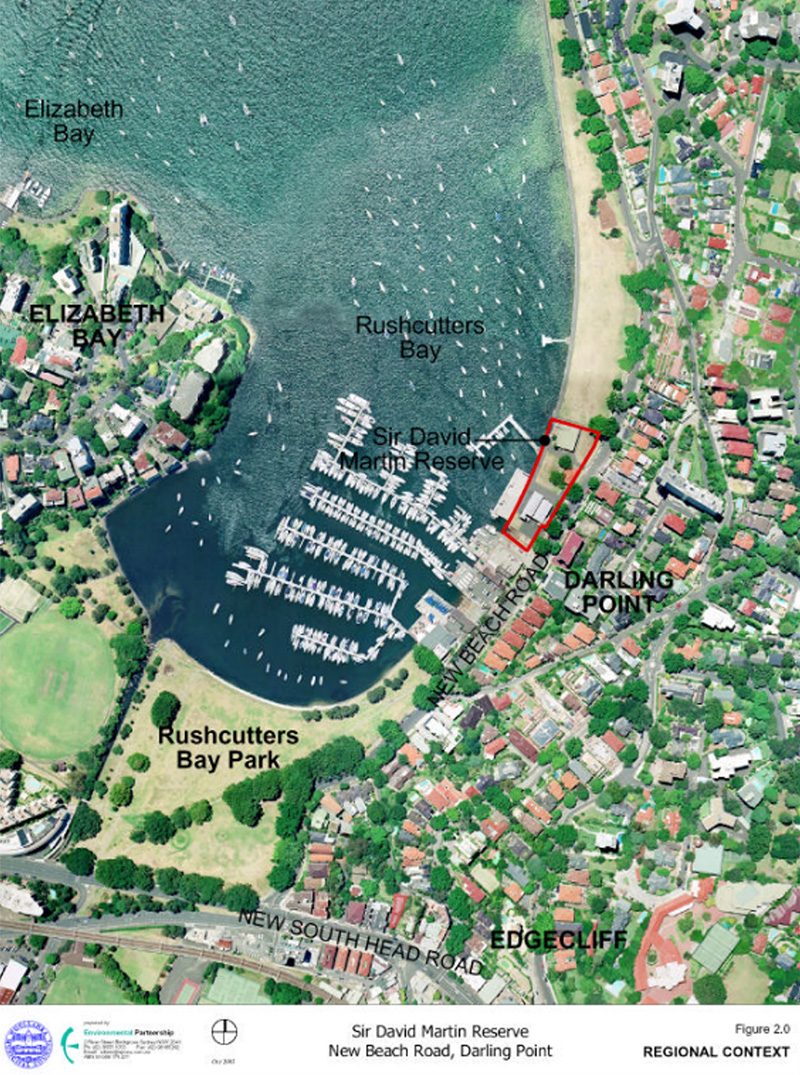
Prior to Federation, several Australian colonies had their own Naval Brigades with NSW also having separate Naval Artillery Volunteers who manned coastal artillery. These NSW Naval forces were based at Fort Macquarie on Bennelong Point. With Federation the NSW naval forces became part of the new Commonwealth Naval Forces (CNF) and the government relocated these forces in March 1901 to Rushcutters Bay.
The NSW Naval forces took with them the old wooden Drill Hall and the attached office building to the new site, subsequently adding a boatshed, cottage and a storeroom (Sail Loft).
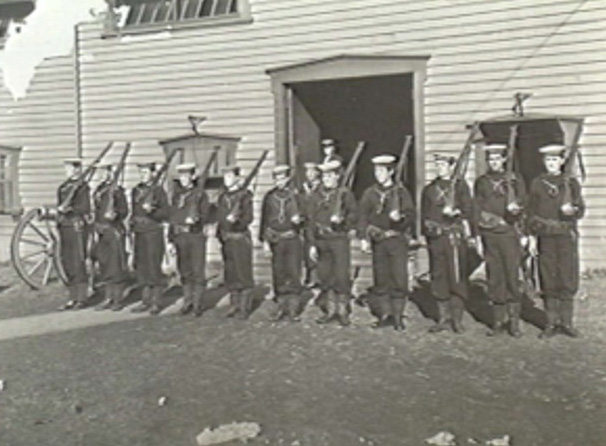
The RAN left Rushcutters Bay in 1984 but the Drill Hall and attached office, the cottage and the sail loft remained and are now used by community groups for a variety of activities. The boatshed is used by the RANSA that was set up in 1966 to promote sailing in the RAN.
The following four photos, taken in 2022, are of the buildings left at the reserve by the Royal Australian Navy when they departed from Rushcutters Bay in 1984.
Two important events occurred in 1911, the renaming of the Commonwealth Naval Force (CNF) as the Royal Australian Navy (RAN) and legislation which established compulsory naval or military training for all Australian males between the ages of 18 and 60. The naval training group became known as the RAN Reserve (RANR).
After the 1911 formation of the RAN the Rushcutters Bay site became the Sydney Naval Depot. The site was used as an administrative depot for the compulsory peacetime training from 1911-1929. The site also housed the Sydney District Naval Office.

In 1912 the Commonwealth Government applied to acquire an area north of the Naval Depot for Naval purposes. The state government refused the request but gave approval for the use of the area as a ‘parade ground’.
Compulsory training was suspended in 1929 but the Naval Reserve Depot continued, largely for volunteers. A Naval Recruiting Office for the RAN was also established on the site.
With the fear of possible war in Europe the Australian Government decided to build up sea-going forces and naval training facilities. In 1937 the Rushcutters site was chosen for the building of an Anti- Submarine School. The Anti-Submarine (A/S) School became operational on 13th February 1939. After 1939 the Naval use of the Rushcutters Bay site greatly expanded and on 1 August 1940, the depot was commissioned as HMAS Rushcutter.
The early 1940s saw a large increase in A/S and Radar training staff. The A/S School became involved in fitting out auxiliary escort ships and Bathurst Class Corvettes with A/S equipment and training the men to operate it. The A/S school is said to have trained so many officers and operators who fought in the battle of the Atlantic, that it played an important part in turning the tide against German U-boats.
Vice Admiral Russell Edward Shalders in his speech given at the Australian War Memorial Plaque Dedication of HMAS Rushcutter on 24 March 2006 said “Australia stands proud for our contribution of anti-submarine officers and men from HMAS Rushcutter, loaned for service in the Royal Navy during WWII. Many of Rushcutter’s people served with distinction in the Battle of the Atlantic in many and different roles over the long and hard years of the Second World War.”
The Vice Admiral also gave special mention to the inspired leadership of Commander Harvey Newcomb (RN) the Officer in Charge of the A/S School at HMAS Rushcutter.
The Fairmile vessel School was established 1 June 1942 at HMAS Rushcutter. The Fairmile School required additional facilities. Two blocks of offices and a classroom were erected north- west of the A/S School and were two of the many timber buildings to be added to the original cream brick A/S School. Berthing facilities were required for a maximum of twelve vessels. Three wooden jetties, of 150 feet (45.72 meters) each, were constructed from the parade ground into Rushcutters Bay, and the waters in and around the area were dredged to a depth of nine feet.
Fairmile vessel tasks included convoy escort, servicing and supporting advancing troops, landing and recovering commandos and coastwatchers, rescuing civilians from enemy occupied territories, and invasion escort. These craft were maids of all work and a generation of Australian sailors learned their intricacies at Rushcutter.
Expansion continued during World War 2 and the site eventually housed the A/S School, the Radar School and the Gunnery Instruction School. It also served as a base for the mosquito fleet, comprising the Harbour Defence Motor Launches, the Fairmile patrol vessels and the Naval Auxiliary Patrol Boats.
The cottage (see photo) was utilised as the first recruitment centre and on 18 November 1942 the first women to carry out administrative duties at HMAS Rushcutter began serving as WRANS. The cottage provided accommodation for the WRANS.
With the end of World War 2, training was greatly reduced and the main role became providing medical, clerical and pay facilities for the many men and women to be demobilised. Demobilisation continued as the primary function in 1946. The cottage continued to be used as a recruitment centre for the defence forces generally.
In 1947 the A/S School lost responsibility for equipment maintenance and hence their space requirements were reduced. In 1947 the Australian Naval Sailing Association, later to become RANSA, was founded in the boatshed. The Torpedo Anti-Submarine (TAS) School and its Mining Section was transferred to Rushcutter in 1948. Also transferred at that time was the Diving School. RANR training resumed in 1950 and was strongly supported by men with war service.
In 1956 the RAN Experimental Laboratory (RANEL) was established at Rushcutter, with citizen scientists and a Naval Superintendent.
In 1959 it was agreed that RANEL would do all RAN scientific work. This would require expansion in staffing and accommodation. So, in 1968 the Diving School and related activities were moved to another Sydney base, HMAS Penguin. When HMAS Rushcutter was finally paid off on 29 July 1968, RANEL remained.
RANEL changed its name to the Royal Australian Navy Research Laboratory (RANRL) in 1969. The RANRL and RANSA were the sole occupants of the Rushcutter site until 1984 when the RANRL was transferred to Pyrmont, leaving only the RANSA in the boatshed. RANSA were given a special lease to keep using the boatshed.
The name of the Reserve on which the base sits was changed to Sir David Martin Reserve in 1991 in honour of the former NSW Governor and Rear-Admiral.
The Reserve was used, in conjunction with Rushcutters Bay Park and Yarranabbe Park, as the Olympic Sailing Shore Base for The Sydney 2000 Olympic and Paralympic Games. Woollahra Council was granted control of the site in July 2001.
Much of the RAN’s former site is now the centre of civilian sailing activities including the Cruising Yacht Club of Australia (CYC); RANSA; the d’Albora Marina; and ship chandlers and associated services. The number of yachts moored in the Bay has increased over the years and each Boxing Day it is the focal point of the annual Sydney to Hobart Yacht Race.
References:
“Contact! HMAS Rushcutter and Australia’s Submarine Hunters 1936-1946”
Edited by G R Worledge Published 1994 by the Anti-Submarine Officers Association.
https://navyhistory.au/naval-heritage-sites/
https://navyhistory.au/new-south-wales-naval-forces/
https://navyhistory.au/new-south-wales-naval-forces-in-1901/
A brief history of the Royal Australian Naval
Reserve | Royal Australian Navy Universal Service Scheme, 1911–1929 | Australian War Memorial (awm.gov.au)
https://www.hms.heritage.nsw.gov.au/App/Item/ViewItem?itemId=5067067
https://en.wikipedia.org/wiki/HMAS_Rushcutter_(naval_base)
Public Exhibition 2004 (nsw.gov.au)


